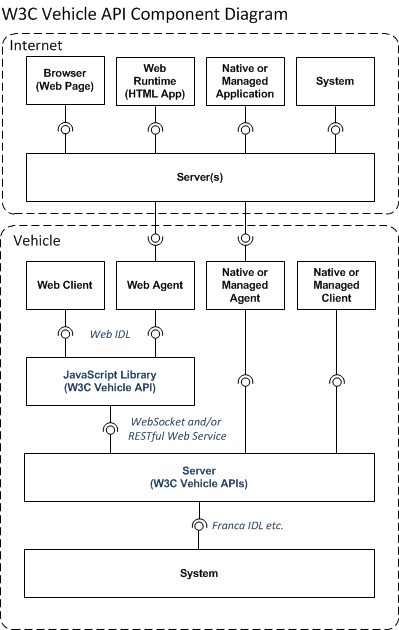...
- Vehicle Information Specification containing durable, unchanging access methods for obtaining vehicle information;
- Vehicle Data Specification to specify agreed upon standardized data elements as well as the method for extending data elements to OEM specific elements.
var vehicle = new WebSocket("wss://wwwivi", "wvvss1.0");
The W3C Automotive Specifications can be realized using a client server architecture.
The clients "connect" to a server using secure websocket connection (wss://).
After the initial connection is established, the client is "Authorized" by the server.
Beyond this, the interactions between client and server follow a Request/Response model.
The supported methods are : Authorize
- GET
- SET
- Subscribe
- Unsubscribe
- getVSS - helps provide only a subset of the information.
- can be controlled by vendor.
Request/Response mechanism over websockets
vehicle.send('{action' : 'subscribe', "path" :"body.mirrors.left", 'reqid' : "[some unique id] }");
Secure Web Socket
Connection Established
REQ : getVSS
RES : VSS File
REQ/RES : get/set/sub/unsub
onopen, onmessage, readyState
Demo
Prepare self-signed certificate
How does the client address IP based ns non-IP transports
The getVSS API provides a JSON payload representation of the entire set of VSS attributes accessible to the client.
This can be controlled by the vendor.
The client is notified via standard websocket styled asynchronous callbacks about different events like
1 onopen
2. onmessage
Security is handled using TLS and the certificates need to be signed using a CSA.
6.1.2 API's defined
6.2 OMA GotAPI and DWAPI
...
